Brendan Jon Philip – 29 November, 2015
These are desolate images: a lone man propped against a wall in a dark alley, sadly evocative of a town unfortunately famed for a student population that cannot hold its liquor. There is much more going on here though than a glancing reading of social critique. The artist's presence is determined and deliberate, if somewhat oblique. His pose is not one of respite but of intercession - he has placed himself here to tell us something about how we occupy the world physically and psychically.
Billed as “an Exploration of some live art themes” Tim Player’s Live at the Slipping Fan Belt ostensibly presents documentation of the artist performing various live actions around the streets of Dunedin. The show consists of set of four paired, framed photographs and a two channel video work: the latter presented in a discreet cluster of three paired portrait-format works and, off to one side, a pair landscape-format images (each work consisting of two photographs in the same frame); the former, on two tightly abutted, wall mounted televisions. This taut and minimal presentation of documentation reifies the deliberate and precise actions of the artist’s performance-based oeuvre.
I have been following Player’s practice for the last several years as it has undergone a steady development that has refined both the conceptual framework and practical approach to his work. Minimising gesture and progressively eschewing obvious props, his performances reference the gamut of twentieth century art history, with a particular penchant for Dada and Situationist interventions in the quotidian field of being, and the works’ physical endurance and duration that marked 60s and 70s avant-garde.
The first show of Player’s I encountered (Xu: Live Autoerotic Objectactivity at Dunedin’s None Gallery) relied on a complex installation as the set for his actions. Subsequent works have focused with an increasing primacy on the artist himself, using specific durational processes to map the physical body as a vessel through time, rather than through space. His collaborations and participation in group shows made him ubiquitous in Dunedin for a time, almost like a rent-a-performance artist, but always with a sense of a deep personal and intellectual agenda brought to each action.
This ongoing aesthetic and intellectual tightening of practice has also seen a distinct refocussing of location, shifting from the gallery as the primary site of creative labour to an almost ancillary afterthought from the art process. Player’s previous outing, Safari Smoothie, a work in a similar format to Live at the Slipping Fan Belt, was installed in the artist’s neighbourhood laundromat, highlighting his inherent concerns with negotiating an interface between the conceptual and the everyday. The placing of his work in this context in itself constituted a specific art intervention, while in this new show Player’s documents as art objects feel like an unusual spectacle in the Blue Oyster Galley - a space with a long history of fostering experimental and performative practices that is now recast here as a museum vitrine.
The photographic component of this exhibition shows actions from the Propping and Leaning and Waiting series and present the artist doing just that in several locations around Dunedin. Each pair of photographs are framed together and individually titled for the period elapsed between one image and the next - with changes in the surrounding environment indicating the passage of time. The first work of this series, 2 becomes 4, has the artist leaning against a dark grey, monolithic concrete wall, the fall of his shadow across the stark geometry of the intersection of wall and footpath indicating the hours of afternoon that bracket this piece. For all intents and purposes, 2 becomes 4 could be images from the beginning and end of an endurance based performance - with the artist unmoving from this position for two hours, a conceit not unfamiliar within Player’s catalogue.
This specific notion of durational performance is however subverted in the next two photographic pairs, 11 becomes 11 and 2:35 becomes 2:50. The former has the artist leaning against the display window of a craft shop at night and then twelve hours later at the same location with the shop open for business and the performer conspicuously absent. There is no bodily duration here, only place and time. The next work, spanning fifteen minutes, has the artist leaning with his arm out placing his hand on buses pulled up to stop, the differing lurid advertising on these vehicles the most glaring indication of the change in temporal state between one image and the next. The change of these vehicles indicates the artist could not be holding this same pose throughout, and intimates that the mode here is repeat rather than sustain.
The final work from this set, 10 becomes 12 is located in an unlit access lane late at night, with Player leaning against a brick wall with his back to the camera and shrouded by darkness. These are desolate images: a lone man propped against a wall in a dark alley, sadly evocative of a town unfortunately famed for a student population that cannot hold its liquor. There is much more going on here though than a glancing reading of social critique. The artist’s presence is determined and deliberate, if somewhat oblique. His pose is not one of respite but of intercession - he has placed himself here to tell us something about how we occupy the world physically and psychically.
The two-channel, 45 minute video work, Xam is my Man, also presents us with the artist taking his actions to the streets of Dunedin at two distinct intervals of time simultaneously. During the day on one screen and at night on the other, we see Player filmed from behind as he walks a seemingly arbitrary dérive circling around the city blocks that surround the Blue Oyster. Wearing the same top coat seen in the photographs as a kind of signifying costume, the artist carries a portable stereo cassette deck slung over his shoulder on a bright red strap, feeding the diegetic soundtrack with cacophonous mix-tapes of great bebop drummers like Peter Brötzmann and free jazz saxophonists such as Albert Ayler, and (at night) recordings of Nico albums played at 16rpm. Taken from the daylight mix-tape it is the drummer Max Roach who lends the work its title - ‘Xam’ being ‘Max’ spelled backwards.
Street sound and music interweave from the built-in speakers of each television creating a discordant stereo spread. In the daylight video Player walks stoically through the streets seemingly unaware of, or at least uninterested in, his surroundings - and perhaps strangely, generates little attention from his fellow pedestrians. They barely seem to notice this angular young man blasting staccato bursts of specifically enculturated music. The nocturnal wanderings are devoid of life, save the artist, while the doleful voice of Nico becomes a disconsolate drone of abandonment at half speed.
Viewing these two videos side-by-side one gets a sense of two versions of the artist - one nocturnal, the other diurnal - impossibly stalking himself through time. Spiralling through these familiar streets each version of Player becomes a ghost or an echo of the other. As we are distinct individuals from one moment to the next, building what we call ‘identity’ through a conglomeration of these moments - a semblance of continuity - Tim Player’s doubled psychogeographic mapping pulls apart this continuity, revealing a fragmented architecture that underlies our easy illusions of self and reassembles them in a leaner and more truthful mode.
Live at the Slipping Fan Belt determinedly plays against expectations and subverts the narrative of Player’s established practice, whilst using this history as a solid foundation from which to move towards newer territories of idea and expression. Like the experimental drummers that he is fond of, the rhythm is irregular - but the music holds itself together through the purposeful intersection of intention and action. This solidly considered process points towards what one hopes will be a long and engaging career for this young artist.
Brendan Jon Philip
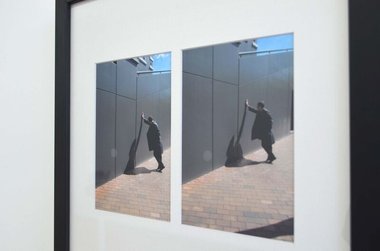

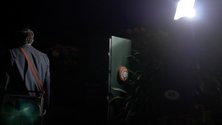
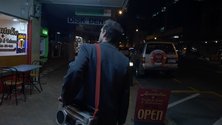
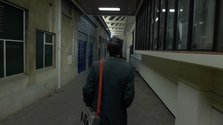


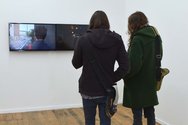
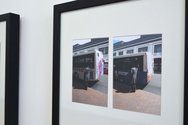
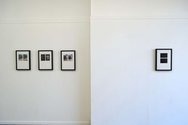
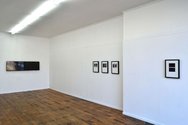
 Two Rooms presents a program of residencies and projects
Two Rooms presents a program of residencies and projects Advertising in this column
Advertising in this column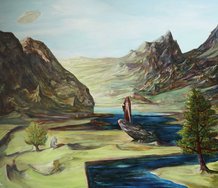
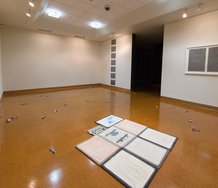
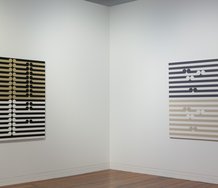
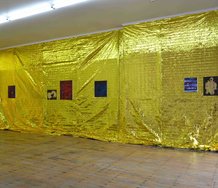
This Discussion has 0 comments.
Comment
Participate
Register to Participate.
Sign in
Sign in to an existing account.